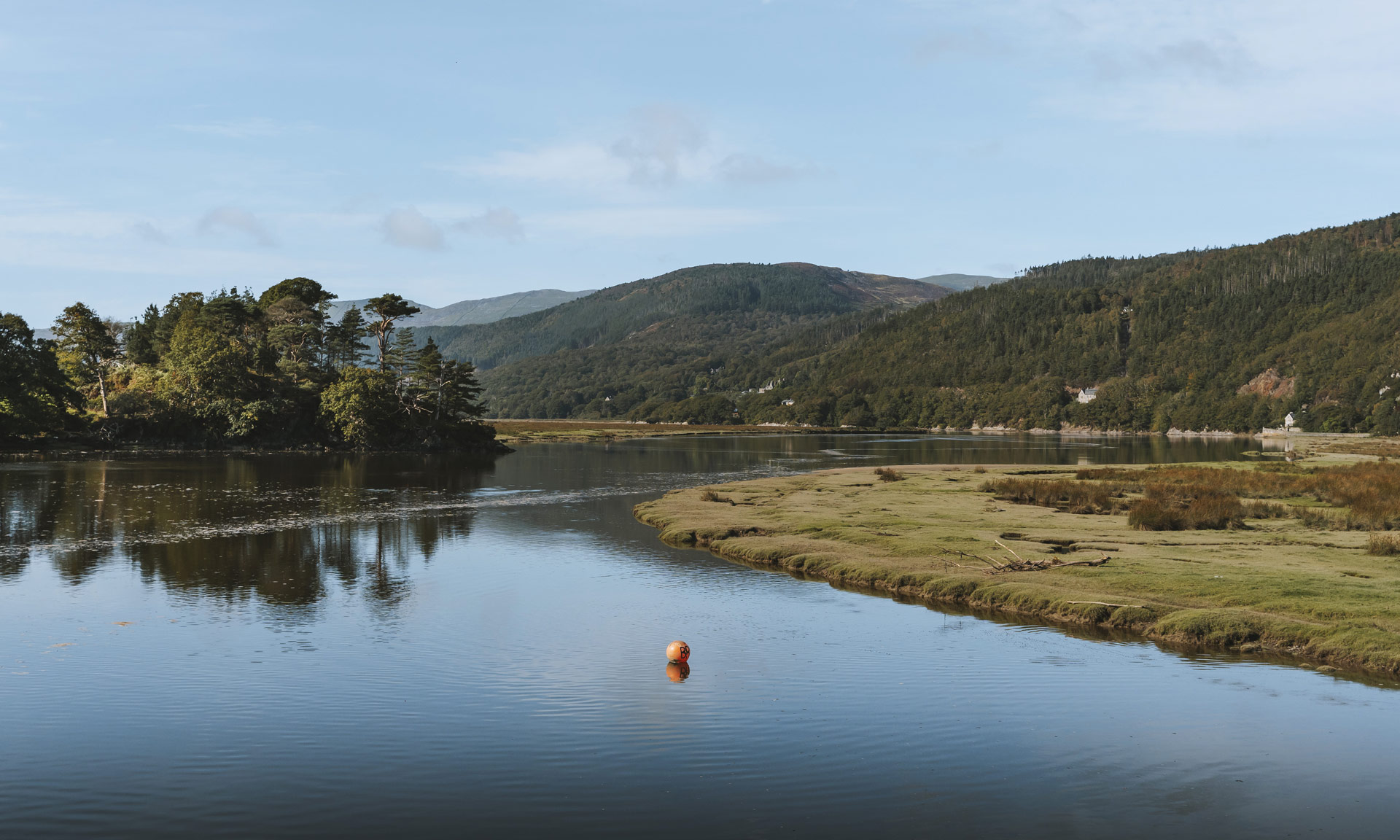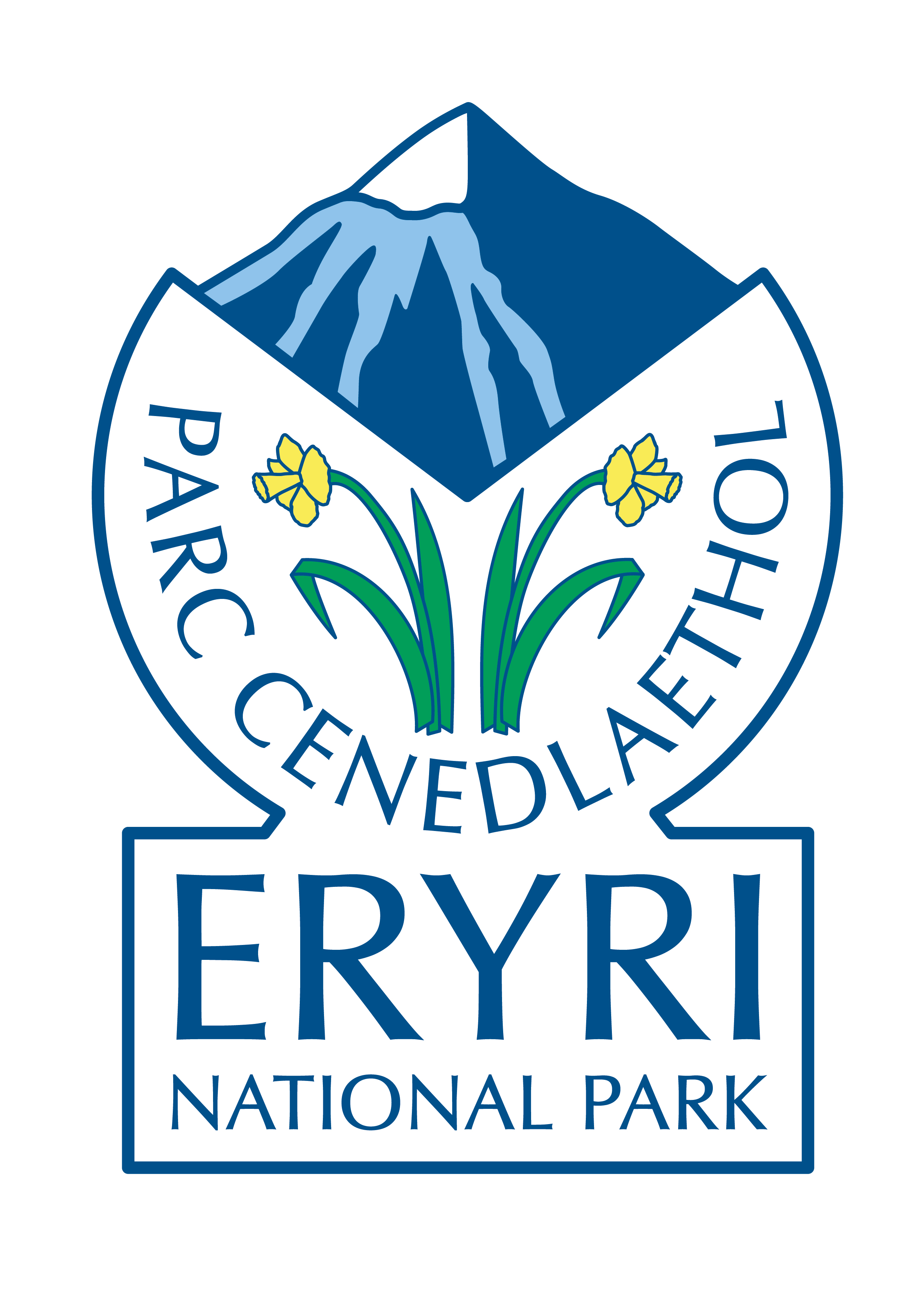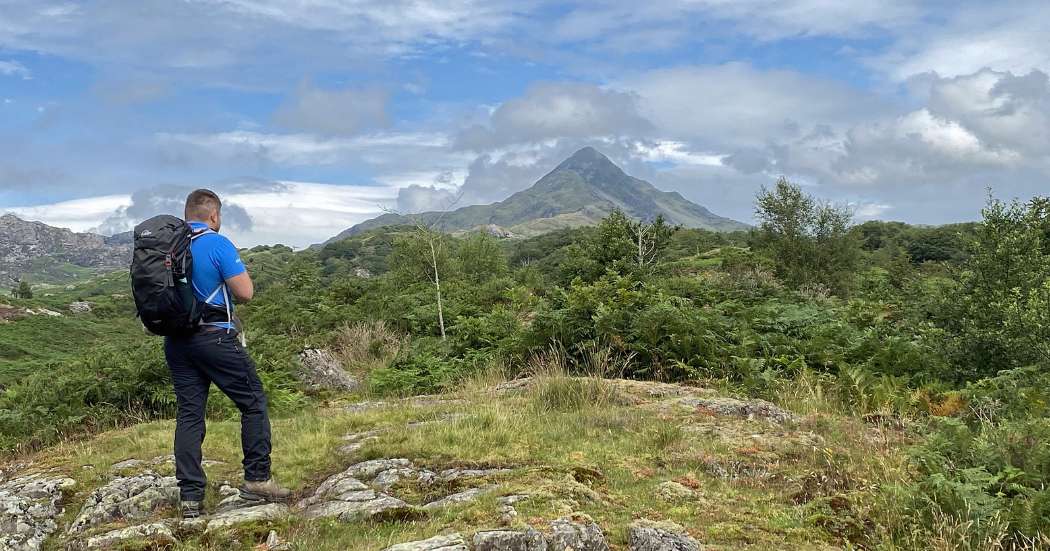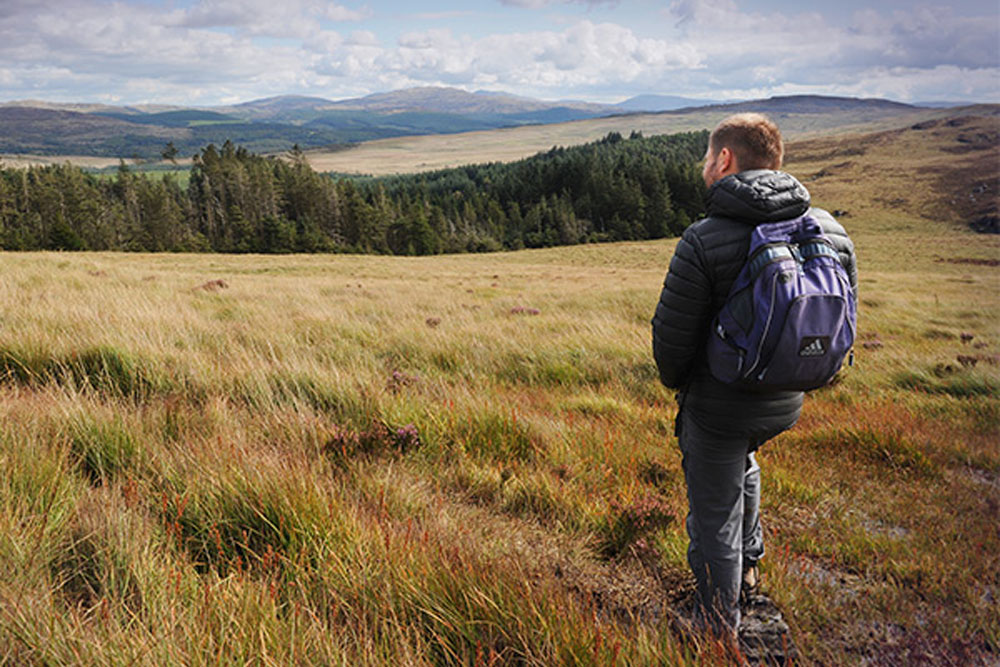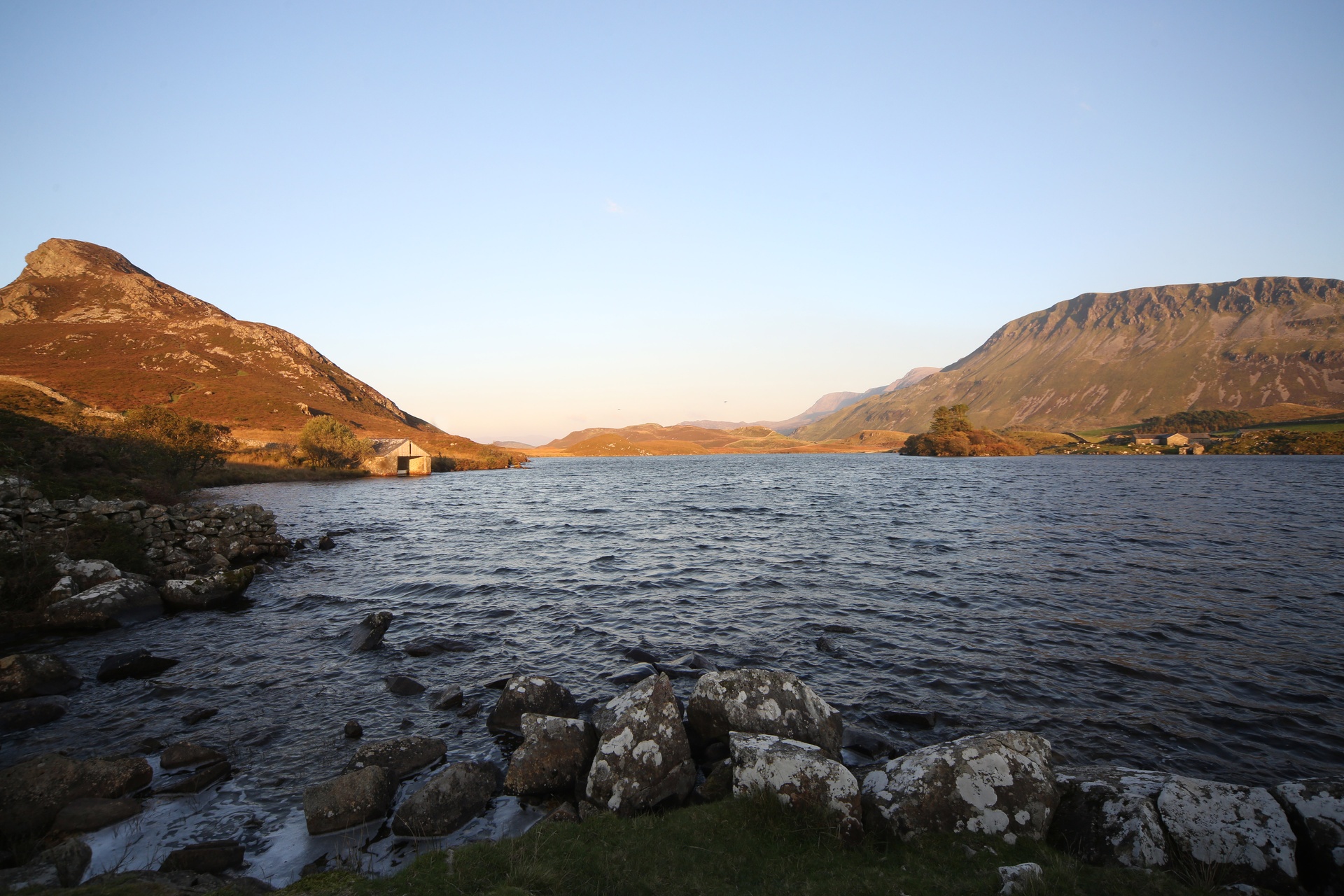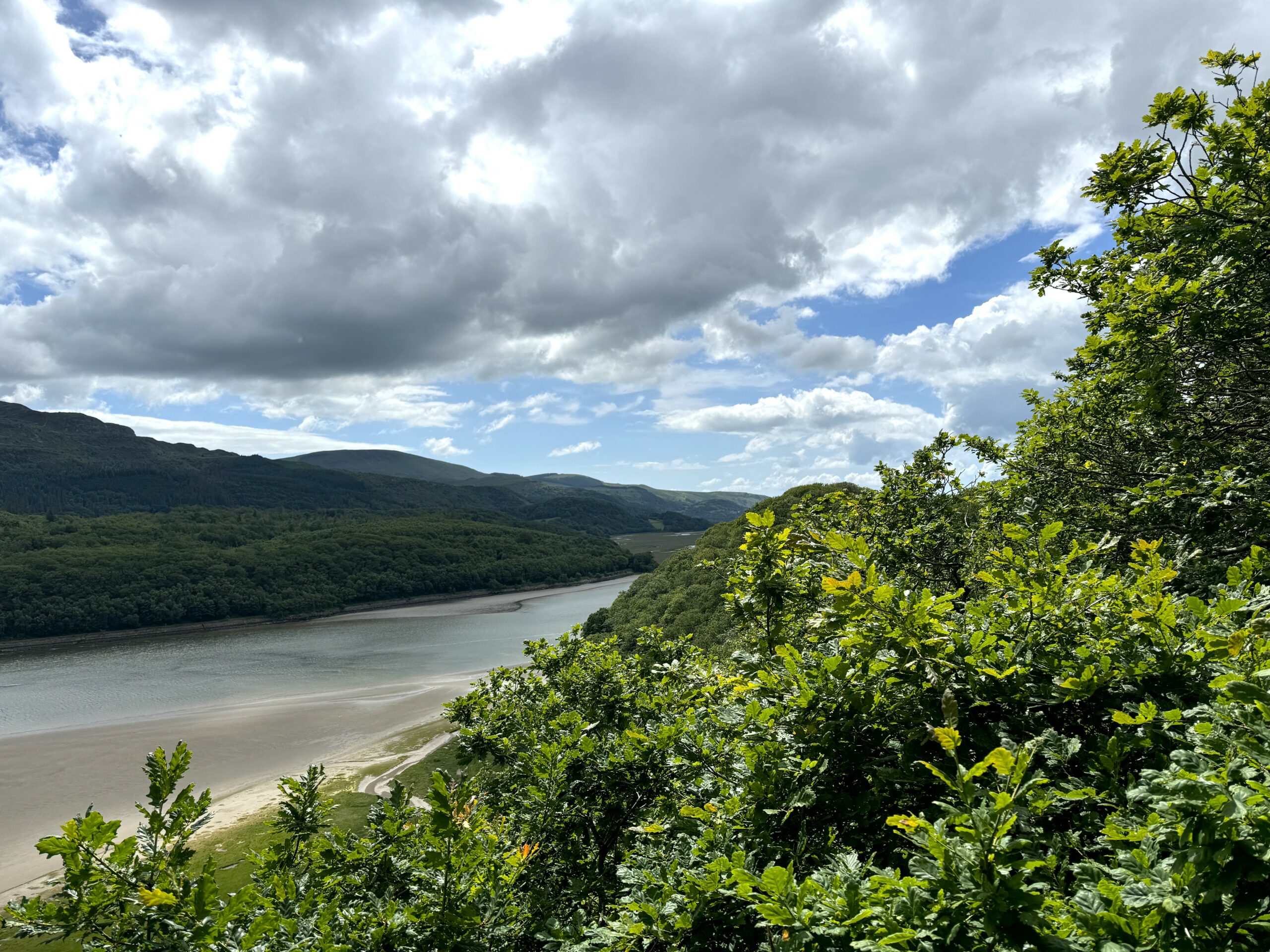A circular walk with spectacular, far-reaching views of mountains and the sea
This circular walk begins in the remote upland village of Croesor, nestled at the foothills of Cnicht in the stunning landscape of Eryri. Just five and a half miles northeast of Porthmadog, Croesor is a charming 19th-century village that once housed workers from the nearby Rhosydd and Croesor quarries.
This moderate walk leads over public footpaths and permissive paths. Some sections along the walk will be wet and steep, and crossing agricultural land, so please keep your dog on a lead.
Why this path?
This circular walk from the upland village of Croesor offers a unique blend of history, nature, and stunning views. As you pass through the picturesque Cwm Croesor valley and past the historic Parc Quarry, you’ll be walking in the footsteps of slate workers from the 19th century. The route showcases the natural beauty of Eryri, with panoramic views of both the mountains and the sea. Along the way, you’ll also see evidence of glaciation and the impressive geology of the region.
© Crown copyright and database rights OS AC0000825604. Use of this data is subject to terms and conditions.
The National Park Authority has categorised this route as a moderate route. It is suitable for people with some countryside walking experience and a reasonable level of fitness. The terrain will include some steep or unsurfaced paths in the open countryside. Walking boots and waterproof layers are essential.
Start / Finish:
Car park in the village of Croesor
Relevant OS Map
OS Explorer OL18 (Harlech, Porthmadog & Bala)
Download Route GPX
Always park in designated parking places and never in areas where you block entrances to fields, residential areas.
Car park in the village of Croesor
Stay safe and help protect the countryside by reading the information about safety and following the Countryside Code.
Local history
The small village of Croesor developed in the 19th century to house workers from nearby quarries like Rhosydd and Croesor. The Croesor Quarry, which opened around 1856, faced many challenges until Moses Kellow became manager in 1895. A fearless innovator, Kellow introduced new machinery and brought electricity to the quarry and his home using a 350 kW hydro-electric plant in 1904.
Between 1865 and 1930, the quarry produced around 2,000 tons of slate each year, crafting products such as billiard table tops, gravestones, flooring slabs, and chimney pieces. Slate was transported via the Croesor Tramway—parts of which are still walkable today—or via dramatic inclines like the Rhosydd Incline at the top of Cwm Croesor.
Geology
The effects of glaciation from the last Ice Age, between 26,000 and 11,000 years ago, are evident in this valley. The relatively soft sedimentary Ordovician rock was eroded by the glacier, leaving behind the harder, irregular igneous intrusions that form features like Cnicht and Moelwyn Mawr. While the “horn” feature, created by glacial excavation in four directions, is common in the Alps, it is less perfectly developed in Wales. Moelwyn Mawr comes closest, though Cnicht has earned the nickname “the Welsh Matterhorn.”
Bob Owen Croesor (1885–1962)
Bob Owen Croesor, a well-known native of Llanfrothen near Croesor, led a remarkable and varied life. He worked as a farmhand and shepherd, served as a clerk at the Parc and Croesor Quarry under Moses Kellow, and later worked at the Rural Council Offices. Bob developed a deep interest in Welsh genealogy, collecting rare books, copying parish records, and becoming an authority on Quaker history. At his home, Ael y Bryn, next to the chapel, he amassed an extensive library of books, papers, and manuscripts. Visitors from as far as America came to consult him about their family trees.
He received an hon. M.A. degree of the University of Wales and later the O.B.E. for his contribution to the history and literature of Wales.
